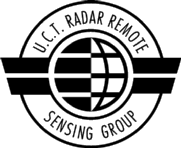Process Management
of
Embedded System Design
|

Radar and Remote Sensing Group
Department of Electrical Engineering
University of Cape Town
|
Motivation
A growing trend in advanced embedded
system development is towards
customizable and software-intensive products built using open
source development tools. This trend is caused partly by the dynamic
nature of application environments, the need to reduce development
costs, and most importantly, to accommodate the growing demands for
functionality and performance made by technically more sophisticated
clients and end users (8, 6).
In the military sector, the complexity of
systems is growing rapidly to overcome new challenges associated with
military operations on urban terrain (MOUT) and asymmetric warfare (1,
2, 4). The requirements of embedded systems, and radar applications in
particular, are changing in relation to these new challenges. But added
to these difficulties are issues of decentralized development and the
mobility of engineering staff. Embedded software development processes
used in this field are lagging behind (3, 5, 7),
making it difficult for development businesses to deliver advanced
systems on time and to maintain these projects efficiently over their
often long lifetimes.
Focus
This research project is focused on
research and development (R&D) projects in which embedded
systems are prototyped. This process is not limited to radar
applications, although it is being optimized for use in these projects.
The objective of this process is to develop procedures by which the
design process of our embedded systems can be performed more
efficiently, following a consistent and more formalized approach. This
will allow researchers working on current projects to share development
knowledge and artifacts more effectively, and for future researchers to
better understand and make use of previous projects.
Methodology
A key aspect in the development of
this process is determining a suitable balance between automation,
documentation, hardware/software design, and coding -- a balance that
is realistic for use by R&D researchers in that the amount of time
spend on innovative work is not degraded, but rather performed more
efficiently with better results in terms of concepts tested.
A creative research
methodology is being used to develop, and iteratively refine the
process through application
in closely monitored case studies. The research findings will be
disseminated in-house using seminars, workshops, and the intranet, and
externally through publications and the web.
Team
This research project is being
carried out by Simon Winberg in collaboration
with the parties shown in Table 1.
Name
|
Affiliation
|
Specialization
|
Simon Winberg
|
Department of Electrical
Engineering,
University of Cape Town
|
Embedded systems and artificial
intelligence
|
Prof. Mike Inggs
|
Department of Electrical
Engineering,
University of Cape Town
|
Radar
systems
|
Prof. Steve Schach
|
Department of Computer Science
and Electrical Engineering,
Vanderbilt University
|
Development methodologies
|
| Dr. Mike Linck |
Department of Computer Science,
University of Cape Town
|
Computer-assisted learning
|
Dr. Alan Langman
|
CEO of OpenFuel Company
|
Embedded systems and open-source
software
|
Project Status
During the six-month period,
July-December 2004, the researcher used the
first round of case studies to acquire data relating to ad-hoc
techniques employed by a set of developers, each working on separate
embedded system projects. The data were analyzed earlier this year and
the results of this evaluation are being used to develop a framework
that comprises a process document, a directory structure, database, and
scripts. Development of the framework is being performed concurrent
with testing the revisions in the context of embedded system
development projects. This approach allows revisions of the framework
to be fed back promptly to individuals using the framework.
Based on the findings thus far, and
further insights gathered from the literature, decisions are being made
on how to narrow this topic further, and to decide effecitve tradeoffs
between conventional software development protocols documented in the
literature, and procedures typically employed by our developers. The
framework designed has been refined and the first version is under
construction. The directory structure and support tools have been
collectively termed the “Embedded System Artifact Organization” (or
ESAOA) framework, and it is based partly on software organization
methods as described and used by SourceForge, and partly on an ontology
of embedded system development terminology, in order to make the
structure and tools more intuitive. ESAOA is being used by engineering
students in the Embedded Systems (
EEE374W)
course, and the students
have provided the researcher with useful feedback in regards to the
utility of ESAOA to novice engineers. The second round of case studies
are planned to start in August this year.
Contact Information
If you would like more information on this project, or are interested
in participating in this project, please email Simon Winberg using the
following address:

.
References
- Crino S. Representation of Urban Operations in Military Models
and
Simulations. In 2001 Winter Simulation Con- ference. Association of
Computing Machinery, 2001.
- Farkas C, Huhns M. Making Agents Secure on the Semantic Web.
IEEE Internet Computing, 6(6):76R79, Nov 2002.
- Graaf B, Lormans M, Toetenel H. Embedded Software Engineering:
The State of the Practice. IEEE Software, 20(6):61R69, Nov 2003.
- Papadopoulos C, Lindell R, Mehringer J, Hussain A, Govindan
R. COSSACK: Coordinated Suppression of Simul- taneous Attacks. In DARPA
Information Survivability Conference and Exposition, volume 2, page 94.
Institute of Electrical and Electronic Engineers, Apr 2003.
- Taylor Geoffrey R. Moving On: Software Engineering Paradigms
of the 21st Century. In Proceedings of the Working Conference on
Complex and Dynamic System Architectures. Dec 2001.
- Theodorou A. What Trends Do We See. (Online) Available from: http://www.aristotechnics.com/articles/99-4.shtml,
Jan 1999.
- VDC. Is the Development Process for Embedded Projects Broken.
(Online) Available from: http://www.vdc-corp.com/embedded/press/02/pr02-41.html,
Apr 2003.
- Walters D. New economy - new business models - new
approaches. International Journal of Physical Distribution and
Logistics Management, 34(3-4):219R229, Mar 2004.


 .
.